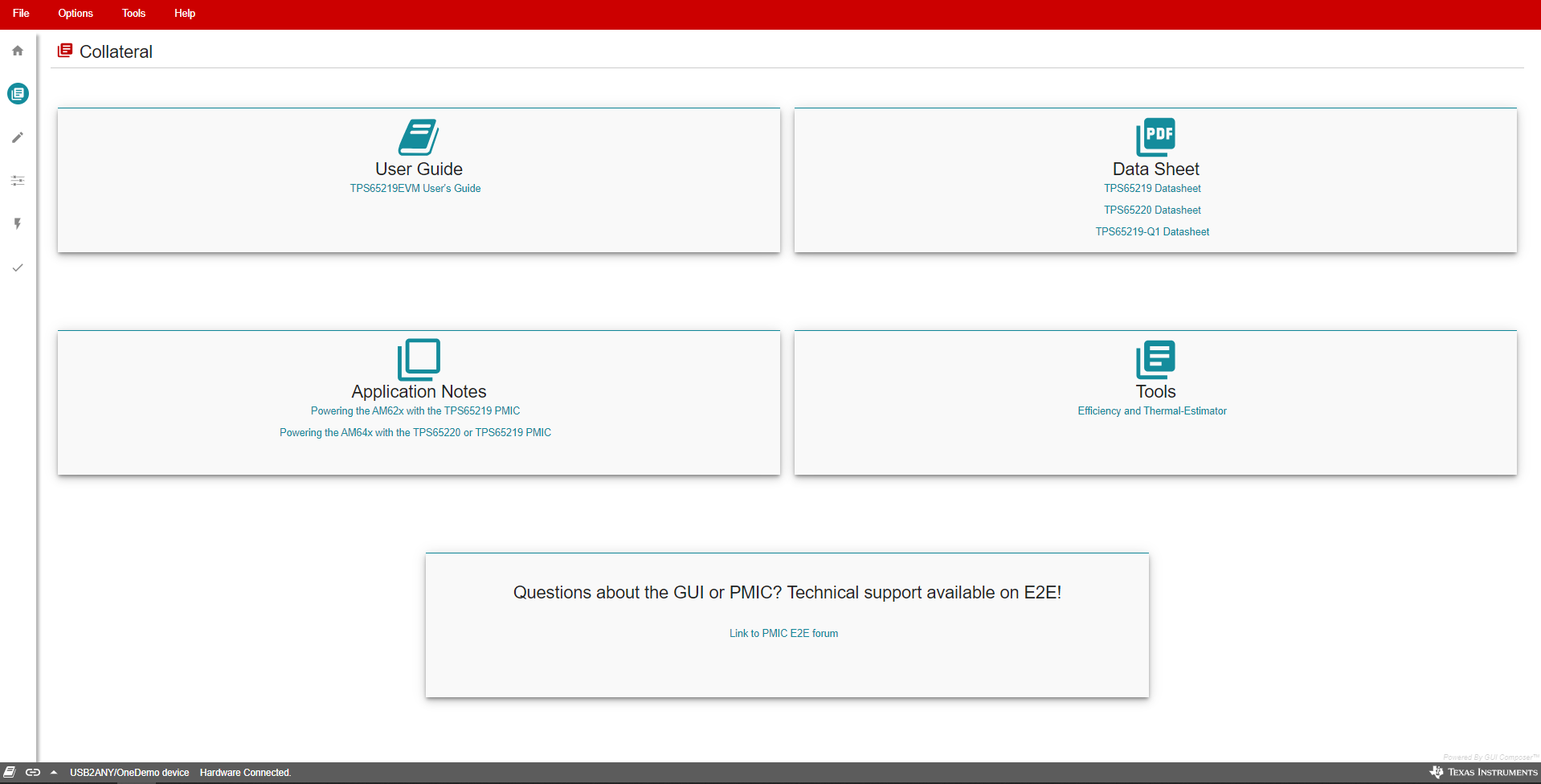SLVUCF6 july 2023
- 1
- Abstract
- Trademarks
- 1Introduction
- 2Requirements
- 3TPS65219 Resources Overview
- 4EVM Configuration
- 5NVM Programming
- 6Graphical User Interface (GUI)
- 7Schematics, PCB Layouts, and Bill of Materials
6.4 Collateral Page
The Collateral page, shown in Figure 6-7, contains relevant documentation for using the TPS65219 or TPS65220 PMICs. Here you can find a link to the EVM User’s Guide, Data sheets, Application notes for processor power designs, and a tool for efficiency and thermal estimation.
At the bottom of the page, there is a link to our E2E forums for technical questions about the GUI or PMIC.
 Figure 6-7 Collateral Page
Figure 6-7 Collateral Page